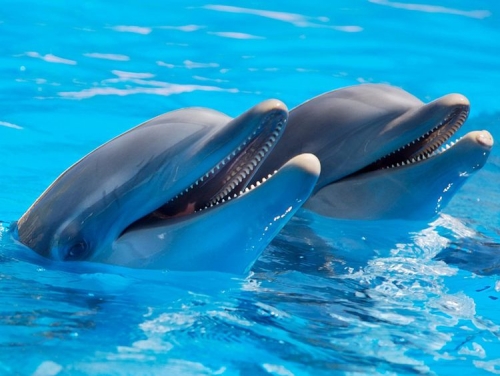Bottlenose Dolphins Use Friendly Facial Signals for Play, Study Finds
AFP | Washington
The Daily Tribune - www.newsofbahrain.com
Email: anchalo@newsofbahrain.com
“Smile, and the whole world smiles with you,” goes the expression—and it seems this sentiment holds for bottlenose dolphins as well. A recent study published in the journal *iScience* reveals that these intelligent marine mammals employ friendly facial cues to indicate non-hostile intentions to their playmates, who reciprocate in kind.
Senior author and evolutionary biologist Elisabetta Palagi from the University of Pisa shared with AFP that this significant finding was discovered “by chance.” While observing dolphin play behavior, researchers noted that dolphins initiated play sessions by opening their mouths in front of one another without any biting involved.
Curious about this behavior, Palagi and co-author Livio Favaro of the University of Turin delved deeper into their observations. They recognized the importance of preventing play—often characterized by acrobatics, toy interaction, chasing, and tail slapping—from escalating into actual fighting.
While various animals, including primates and bears, are known to exhibit open-mouth gestures as visual signals of playfulness, it was previously unclear if dolphins did the same. To investigate this further, Palagi and her team recorded the interactions of captive bottlenose dolphins during play sessions in Italy and France, observing their interactions with both each other and human trainers.
Across hundreds of play sessions conducted over several months, the researchers discovered that dolphins frequently displayed their toothy grins while engaging with their peers. This behavior was less common with humans and almost nonexistent when the dolphins were alone. The study also noted that dolphins were significantly more likely to show this friendly expression when within each other’s line of sight, and aggressive behaviors such as jaw slapping and violent head movements were never associated with the friendly open-mouth gesture.
The findings suggest that bottlenose dolphins, like humans, rely on visual cues to communicate playful intentions, underscoring the complex social dynamics of these remarkable creatures.
Related Posts

